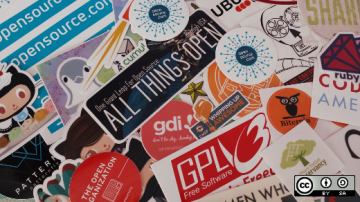Product management is an interesting career. It's immensely rewarding to be the interface between users, business strategy, engineering, and product design. And it's also a highly lucrative career with increasing demand for ambitious and empathetic practitioners.
It's also a role with no single path. You might see various certifications and courses emerging to help address the serious skills shortage. The good news is that these are starting to contribute to the talent pipeline, but they struggle to address the wider demands of the role. This is especially the case where roles require direct experience across the enormous range of what it takes to build and ship successful products.
The corporate way (and the open way)
Some organizations have chosen to tackle the Catch 22 of demanding worldly experience from aspiring product managers by creating associate programs. The most famous may just be Google's Associate Product Manager Program.
Created by Google's first product manager, Marissa Mayer, the program aimed to graduate future leaders—first whisking them around the world for two weeks to soak up real-world settings and challenges, and then rotating them through Google's internal teams over two years of intense learning and empathy building.
Other organizations take a less formal but equally open approach. I spent some time with Google's APMP cohort in 2015 when they visited a startup accelerator in Paris I was attending. Comparing notes, I realized that their experiences sounded like a structured version of the innately open and migratory culture I'd enjoyed in my prior role at Red Hat.
My own product management career was a result of participation in a range of internal and upstream open source projects. These ultimately resulted in an opportunity to spin out with funding and focus on building a product full time.
The comparison made me realize that, while sponsored corporate programs and certification are great resources, there's also another powerful source of product education and experience.
And we call that open source.
Managing in the open
Open source in 2020 is undergoing some interesting evolutions that continue to open up opportunities for new participants to provide their skills and perspectives to the community. We might appreciate the earliest eras of open source as something along the lines of a community of curious engineers learning how to share code and collaborate on projects. That enabled the productization of open source in the enterprise and an associated evolution as the underlying force behind the cloud and the modern web.
While not an exclusive or exhaustive summary of things so far, this lens allows us to appreciate not just projects or products but all of the inputs and efforts that create and maintain the digital interactions of the entire human population. Epic.
Holding this macro view in mind, it's no small thing to consider the overall importance of open source in the world. And the responsibility for practitioners to ensure that it best manages to continue learning how best to convert that early curiosity and collaboration into real-world impacts. These aren't just hobbies on a mailing list anymore.
This is a mission that encompasses every aspect of design, marketing, support, sales, documentation, diversity, community management, legal, and finance… and the list goes on. Having said all of that, we can now appreciate the importance of a role that often has an outsized impact in ensuring these various contributions and all their requirements and lenses onto the world are happy or, at least, in alignment when it comes to shipping an actual product towards a common solution.
Yes. That's the product manager.
No pressure.
Roles for open source product managers
The ways that a product manager can contribute will vary by the scale and goals of the project or product. A good foundation for approaching open source is to consider the developer-centric lens that many, if not the majority, of projects will have begun with. This differs from what we might consider the other extreme—the dominant product-centric focus that has been championed in Silicon Valley over the last decade.
The commonality between both extremes is a basic level of operational hygiene, a need to break down a high-level vision across multiple timescales and potentialities, an understanding of the market and community in and around the project, and some involvement in juggling the delicate relationship between time, resources, and desired features.
A useful framing is to avoid the trap of trying to apply product management skills to an open source project and instead express them as questions. The ones that resonate the most with the team or community are those that can become priorities. Consider the following as examples.
- What problem or opportunity is being explored?
- How is the solution being framed to tackle this?
- What is being measured to determine if this is successful?
- Who are the people that this solution serves?
- How are they being informed about it?
- How are they learning to actually use or benefit from it?
- How are they involved in collaborating on the solution with us?
- What is the experience like for new collaborators getting started?
- How does the solution fit with both the immediate and wider ecosystem?
- Are there any roadblocks that can be removed in how we operate?
- What additional resources could be made available? Where would those resources help most?
- Where is the documentation being maintained on the project?
- Do we understand accessibility requirements? Are we meeting them?
The list goes on.
A large number of the core purpose questions can be mapped in a handful of tools we use in product management, such as a lean canvas and a value proposition canvas. Add in some personas, and a customer journey map and some attention to both UX and overall design elements, and even a casual contributor can make a significant impact on assisting a technical team. This would be the kind of experience and portfolio building that would go a long way to developing career potential.
In reality, the bulk of requests and opportunities are likely to be around basic documentation, onboarding, helping with pull requests, updating project landing pages, and community management. With time and trust comes a greater ability to handle feedback and feature requests, a deeper understanding of the actual (and potential) users outside of the original team's self-view, and the spectrum of DevRel and marketing activities.
It's important to feel confident that the contributions an aspiring product manager can make are not only valid but welcomed; and increasingly necessary. Open source can be a challenging ecosystem sometimes, but it's useful to remember that it all comes from a shared curiosity about how things work and a passion for creating common outcomes. Trust that the good people are out there—and can't wait for you to get involved.
How to find open source opportunities
So, onto some ideas on how just to find and engage with these opportunities. It can be useful to remember that the phrase "product manager" doesn't have to come into play to gain the skills and portfolio of experience as a contributor.
It's always great to be clear on motivations and limitations when contributing to (or creating) an open source project. This helps the wider community find its balance and steer clear of misconceptions. It's a core part of the product manager communication playbook as well—declaring the long-range vision while also committing to quick iterations with a bias for action.
In terms of finding projects, the following ideas can serve as a starting point.
- Read the GitHub guide to finding open source projects and then searching by your interests or even by what's trending each day.
- Join product manager communities such as Mind The Product and directly ask for recommendations via their Slack or LinkedIn groups.
- Search on LinkedIn for specific product managers working at larger open source companies such as GitLab, Mozilla, Elastic, etc. Contact them to share your intention to contribute to something.
- Search for the open source advocates and DevRel teams at open source companies. Twitter is a great place to find and engage (as are the #opensource and #prodmgmt hashtags).
- Search for open source companies on AngelList or popular open source products on Product Hunt.
- Go to local meetups and open source conferences that you can make it to. Volunteering is a great way to really get involved.
A final call to action
As product managers, we are nearly always thinking in terms of experiments and calls to action. So let's end with one here.
If you are an aspiring or current product manager that wants to get involved with open source projects or products, leave a comment below. Likewise, if you're an open source project or product that would like to have some additional contributions from someone across the wide range of areas I've mentioned above, leave a comment below.
With the rise of open source as the enabler of the modern web and the demand for experienced product managers having never been greater, it might be time to put together a little project in helping connect the two. Pass the roadmap and post-it notes…





Comments are closed.